- News
- Reviews
- Bikes
- Accessories
- Accessories - misc
- Computer mounts
- Bags
- Bar ends
- Bike bags & cases
- Bottle cages
- Bottles
- Cameras
- Car racks
- Child seats
- Computers
- Glasses
- GPS units
- Helmets
- Lights - front
- Lights - rear
- Lights - sets
- Locks
- Mirrors
- Mudguards
- Racks
- Pumps & CO2 inflators
- Puncture kits
- Reflectives
- Smart watches
- Stands and racks
- Trailers
- Clothing
- Components
- Bar tape & grips
- Bottom brackets
- Brake & gear cables
- Brake & STI levers
- Brake pads & spares
- Brakes
- Cassettes & freewheels
- Chains
- Chainsets & chainrings
- Derailleurs - front
- Derailleurs - rear
- Forks
- Gear levers & shifters
- Groupsets
- Handlebars & extensions
- Headsets
- Hubs
- Inner tubes
- Pedals
- Quick releases & skewers
- Saddles
- Seatposts
- Stems
- Wheels
- Tyres
- Health, fitness and nutrition
- Tools and workshop
- Miscellaneous
- Cross country mountain bikes
- Tubeless valves
- Buyers Guides
- Features
- Forum
- Recommends
- Podcast
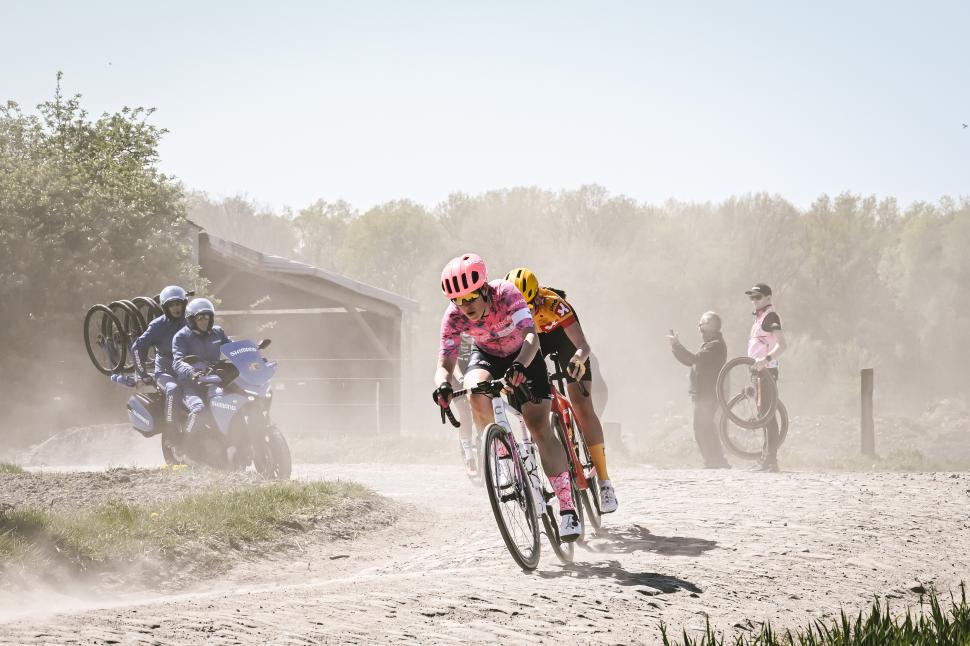 Paris-Roubaix 2022 (Pauline Ballet/A.S.O)
Paris-Roubaix 2022 (Pauline Ballet/A.S.O)How the pros prepare for Paris-Roubaix — the special bike modifications and equipment needed for the brutal cobbled classic
What can you learn from the way the pros set up their bikes for gruelling cobbled races like Paris-Roubaix? Let's take a look at how riders and their mechanics make bikes tougher and more comfortable for the Hell of the North.
Paris-Roubaix is the most daunting, feared and thrilling one-day race on the pro calendar. This year the men will take on a 256.6km (159 miles) course with 54.5km (33.8 miles) of brutal cobbled roads, while the women racing Paris-Roubaix Femmes will ride a 145.4km (90.3 miles) course with 29.2km (18.1 miles) bone-shaking pavé.
It’s a race that requires a special set of skills and a big dose of luck, and we typically see some different bikes and equipment compared to every other race of the year in an attempt to provide a bit more control and compliance in the face of the savage pavé.
Check out David Millar's guide to surviving (and thriving on) the cobbles
Before we get into the details of the changes we can expect to see to the bikes and equipment this Sunday, what it’s like to ride? Last year we got the GoPro out and rode some of the famous sectors to see what it was all about. Here’s the video:
Endurance bikes
Typical race bikes often get swapped out for endurance bikes, which feature longer wheelbases, slacker head angles and increased tyre clearance for bigger tyres. Gone are the days of using cyclocross bikes to fit wider tyres, with most bike brands now providing an endurance bike for running wider rubber.
Bike brands traditionally used Paris-Roubaix and the Tour of Flanders to develop and show off the latest endurance bikes for many years. These bikes are intended to be showcased on the cobbles on Sunday, and bought on Monday by regular cyclists who want the extra comfort and relaxed handling these bikes provide.
The more cynical might say these bikes aren't developed for the pros at all, they're designed for everyday punters who aren't comfortable on standard road race bikes, and the Cobbled Classics are used as a handy marketing tool. Get the pros to ride these bikes for a few races every year and you've got yourself some added sexiness and fabulous exposure.
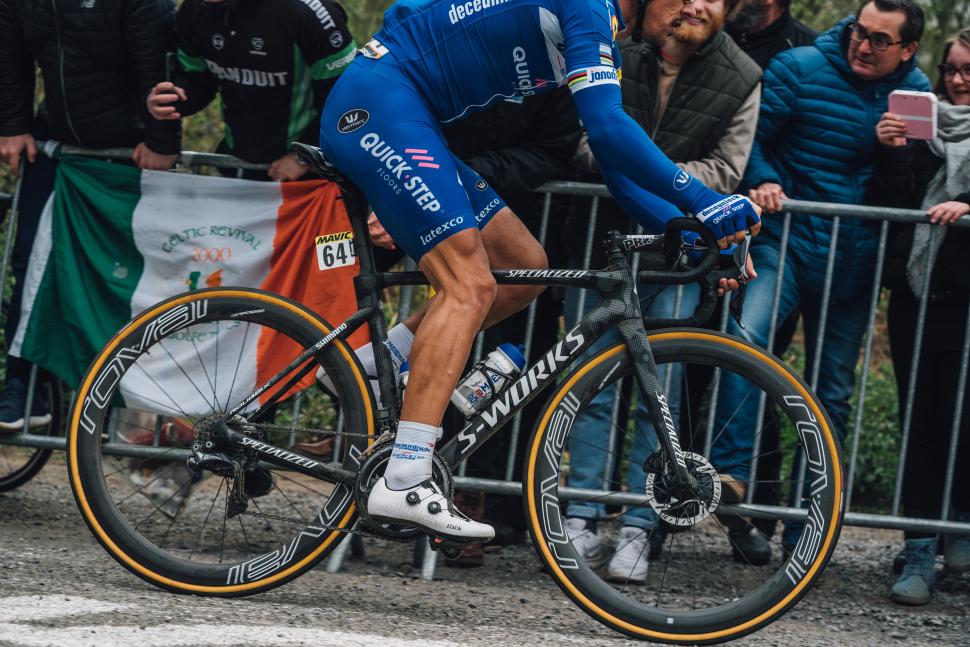
And, while in recent years Roubaix has been won on endurance bikes seemingly custom-made for such a race (Philippe Gilbert's victory on the Specialized Roubaix with Future Shock 2.0 suspension, for example) the last two editions of the men's and women's races have been won on rather 'normal' race bikes: Sonny Colbrelli on a standard issue Merida Reacto Team-E for his 2021 victory, and Elisa Longo Borghini on the latest Trek Domane in 2022, as examples.
Improvements in bike tech across the board in recent years - and the move to wider, tubeless tyres which increases comfort and puncture protection in all scenarios - has perhaps allowed riders to move towards more conventional set-ups for races like Roubaix in recent years. The vast majority of the race takes place on asphalt, and so aerodynamic efficiency is also important for the fast and furious day of racing at Roubaix. Dylan van Baarle's 2022 victory also shown that a conventional race bike is sometimes best, as he powered his Pinarello Dogma F to a record-breaking average race speed at Roubaix with few modifications other than tubeless tyres and some thicker bar tape.
It's for these reasons that Specialized gave their Roubaix bike an aerodynamic makeover the last time it was updated, and this may well be the main aim with the next update which we predict may happen in 2023.
> Read our review of the Specialized S-Works Roubaix
With the latest road and aero bikes now providing more tyre space than ever before – partly due to the shift towards disc brakes – don’t be surprised to again see some riders opting for regular road bikes, even aero road bikes, instead of more endurance-focussed bikes this year.
Wider tyres and lower pressures
Paris-Roubaix is a race where you see wide tyres being utilised. It’s common to see tyres ranging from 28 to 30mm wide, but we have seen tyres as wide as 32mm tyres in the past. Simply put, bigger tyres provide a smoother rider and increased traction over the cobbles.
Lower pressures are key to getting the full benefit of the wider tyres, and most riders and mechanics will keep this a closely guarded secret. It does depend on rider weight and personal preference to a large degree, and some riders are fussier about tyre pressure than some. You can expect somewhere in the region of 65-75psi.
Tubular tyres versus tubeless and clinchers
Tubular tyres are still the most popular option in the pro peloton although we've been seeing more tubeless setups over the past couple of years and Deceuninck-Quick-Step and Bora-Hansgrohe routinely use Specialized clinchers.
Tubulars are the obvious choice for the often jagged Paris-Roubaix pavé because a properly-glued tub won’t detach from the rim when punctured so it's relatively easy to continue riding. Johan Vansummeren proved this point when he won Paris-Roubaix back in 2011, riding the last 4km (2.5 miles) on a flat tyre.
However, Deceuninck-Quick-Step fitted clinchers for the Tour of Flanders earlier in the year and has said that it intends to use them for all types of race, so we'll almost certainly see them again in Paris-Roubaix.
Suspension and frame features
There have been suspension road bikes developed for Paris-Roubaix in the past. Gilbert Duclos-Lassalle and Andre Tchmil between them won Paris-Roubaix on three occasions using the RockShox suspension fork some 20 years ago, and Bianchi developed a full-suspension road bike in 1996 made from titanium.
Such ideas never really caught on though, largely because of compromises in key performance metrics like weight and stiffness, and pretty basic suspension technology, but the developments in frame design and suspension performance since those early attempts are giving rise to the second generation of suspension road bikes.
Although the vast majority of bikes used in Paris-Roubaix have no suspension, the past two editions of the race have been won on Specialized Roubaixs with Future Shock front suspension – Philippe Gilbert taking the victory in 2019 after Peter Sagan (above) won in 2018 (both superb riders, of course, and you can't say they won because of the tech). Future Shock 2.0 provides 20mm of front suspension while the Pinarello Dogma FS has front and rear suspension, with 20 and 11mm of travel respectively.
Trek’s Domane doesn’t feature suspension as such but has a seat tube and steerer tube designed to increase the amount of compliance, while Bianchi adds a special Countervail vibration cancelling material to the carbon layup of several of its bikes to reduce discomfort.
Cervélo says that its Caledonia-5 bikes – which will be ridden in Paris-Roubaix by Team Jumbo-Visma – have been designed specifically to handle the race's cobbles.
"When we design a bike, we start with our library of tube shapes," said Cervélo when it launched the bike last year. "These are shapes we’ve used on other models that we know to have various qualities – aerodynamic, stiff, ultralight, etc – and they help get us to the refinement stage on a bike more quickly. In the case of Caledonia, we wanted durability, light weight, and aerodynamics to be in balance, and selected a package that achieved the performance demands of this kind of race bike."
It wasn't tempted to add extra elements, like elastomers, to provide extra comfort.
"We know how our tube shapes behave, and it’s a matter of placing them in a layout that achieves the desired compliance based on that deflection," said Cervélo. "The simplest solution is almost always the best."
Disc brakes
Most Paris-Roubaix riders will be on disc brake bikes simply because the vast majority of teams now use them routinely.
A few years ago, before disc brakes were as widely used in road cycling as they are now, it was often speculated that Paris-Roubaix would be the ideal stage for them, especially if it rained.
That said, despite usually taking place in the spring, there have been surprisingly few wet and muddy editions over recent years so one of the main benefits of disc brakes, performance in the wet, hasn't been realised.
Peter Sagan demanded a one-off rim brake version of the disc-only Roubaix from sponsor Specialized in 2018 and won the race on it. He was on a disc brake bike for 2019, though.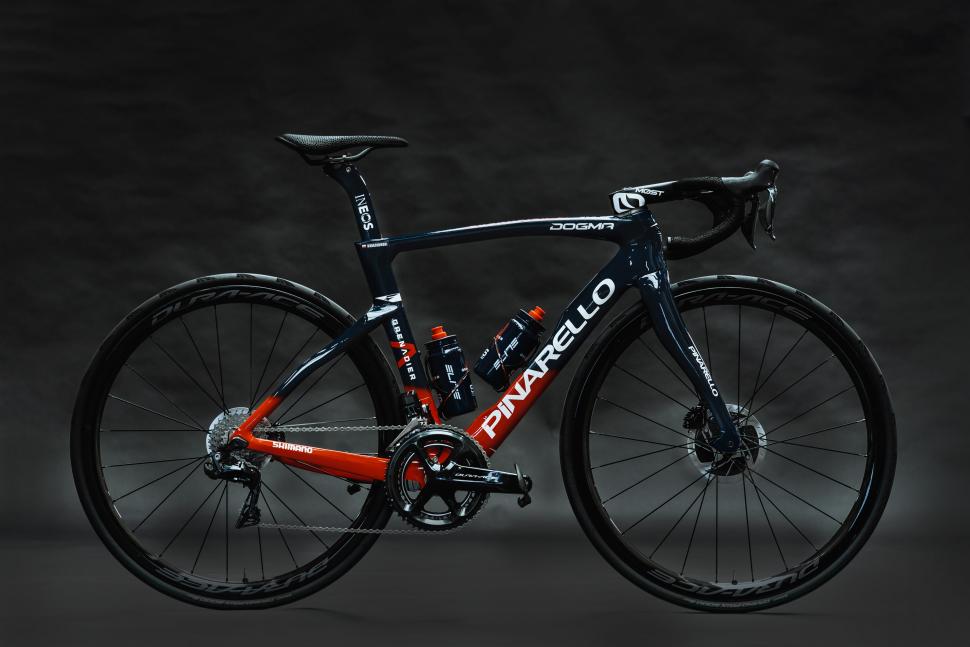
Even rim break stalwarts Ineos Grenadiers will be riding disc brake bikes in this Sunday's race, having recently announced that they'll be riding the Pinarello Dogma F Disc, above, from here on in.
> Ineos Grenadiers are racing on disc brakes… finally
Grip tape on bottle cages
The cobbles do more than rattle your eyeballs, they can also eject water bottles from their cages. Mechanics often add strips of grip tape to the cages to ensure the bottles stay in place. Where you'd usually see carbon fibre bottle cages, many teams opt for aluminium cages for Paris-Roubaix because they can be bent to give a firmer grip on the bottle.
Race notes taped to stems
Unless a pro knows the route really well, it’s common to see distance markers, for the cobbled sectors and feed zone area, written on a bit of paper and taped to the stem or top tube. It provides an easy way to check what’s coming up and can be used if a rider has special instructions to attack or go to the front at a key stage of the race.
Double bar tape
Double wrapped bar tape is a classic trick for providing a bit more isolation from the vibrations. Some riders will wrap the bar tape right up to the stem as well to provide a wider area for gripping the bars. Mechanics might also add gel pads underneath the bar tape in key areas to provide extra comfort.
Extra shift buttons
All teams now use electronic groupsets and one big advantage of wires over cables is the ability to add extra shift buttons to the handlebars. Since riding the cobbled sectors with hands on the tops is the preferred position for many riders, a couple of buttons just next to the stem make it a lot easier to change gear by avoiding having to move your hand to the lever.
Gearing changes
Paris-Roubaix is a flat race and pros don't need small gears. Shimano doesn't offer traditional 53/39T chainsets for new Dura-Ace R9200 so you can expect to see lots of the new 54-40T setups.
Many riders used to swap the 39T inner chainring for a 44T in the past and we'd expect something similar this year. This reduces the gap to the big ring and means if a rider does need to drop into the smaller chainring it won’t be such a massive change in cadence. Powering over the cobbles in the big ring takes serious effort and some riders like the option of a slightly smaller inner ring.
Chain catchers
Most bikes will have a small chain catcher, a little arm extending from the front mech clamp, to stop the chain dropping onto the bottom bracket shell if it does skip and bounce off the chainring.
It’s no guarantee though. In 2017 Tom Boonen, riding the Tour of Flanders, was forced to the side of the road when his chain got jammed between the inner chainring and the frame. The chain catcher hadn’t worked.
Given its lack of hills, Paris-Roubaix is a race where 1x might work well but don't expect to see many riders using it. For a start, Shimano supplies the groupsets for the majority of teams. Although the Japanese brand offers 1x drivetrains for gravel use, it hasn't embraced the technology for the road.
SRAM, on the other hand, is all over 1x. Trek-Segafredo riders rode Paris-Roubaix 2019 using 1x SRAM drivetrains, and we could see that again this year.
Riding technique, speed and line choices
As important as the bike and equipment setup is, equally important is riding technique. Riding cobbles is tough and tricky with the bikes bounced around and crashes and falls are common.
> David Millar's guide to surviving (and thriving on) the cobbles
Speed and line choice, and your position on the handlebars, are key considerations. High speed helps to smooth the cobbles to an extent, the idea being that the tyres skim across the cobbles rather than crashing into each one, helping to maintain momentum.
The pros will also pick a big gear and try and roll it over, which helps to maintain better control on the bike than spinning a smaller gear over the cobbles which can lead to being bucked about in the saddle.
Line choice is important. It's why the teams and riders work so hard to be at the front heading into a cobbled sector. Be at the front and you can pick the smoothest line and weave around holes and upturned cobbles, but find yourself near the back and you don’t have the same luxury. You're also more likely to get held up behind crashes, so being at the front is vital.
Many of the cobbled sectors have a very pronounced crown which usually is the preferred line choice, as it’s a little smoother and flatter than the steep slope either side. The gutter is also sometimes a bit smoother but it’s here that mud, water and stones gather and can be hazardous and raises the risk of puncturing a tyre.
Drops, hoods or flats? Each of the three positions can work, buy you’ll see the riders often preferring the flat tops. Riding on the tops gives you good control and you can bend your arms to help absorb the impacts.
What you don’t want to do is grip the bars too tightly. You want to maintain a relaxed grip that lets the bike move around underneath you and doesn’t pass all the vibrations into your body. Clamp the bars too tightly and you’ll soon be struggling to hold onto the bike due to very sore hands, wrists and arms.
Riding on the tops makes it tricky to change gear and brake, however, but since almost all bikes are using electronic groupsets it’s common for small shifter buttons to be placed on the tops of the bars near the stem.
On some of the more challenging sectors with corners, the riders will often go for the drops, to be able to reach the brakes and maximise control over the bike. We’ve also seen extra brake levers, cyclocross-style, attached to the centre of the bars so a rider can brake on the tops but they are rarer than they used to be.
TV coverage
Paris-Roubaix Femmes will be shown on Eurosport starting at 1:45pm on Saturday, 2nd October 2021
The men's race will be shown on Eurosport starting at 9:40am on Sunday, 3rd October 2021.
Have you ridden the Paris-Roubaix course and who are you rooting for this year?
Mat has been in cycling media since 1996, on titles including BikeRadar, Total Bike, Total Mountain Bike, What Mountain Bike and Mountain Biking UK, and he has been editor of 220 Triathlon and Cycling Plus. Mat has been road.cc technical editor for over a decade, testing bikes, fettling the latest kit, and trying out the most up-to-the-minute clothing. He has won his category in Ironman UK 70.3 and finished on the podium in both marathons he has run. Mat is a Cambridge graduate who did a post-grad in magazine journalism, and he is a winner of the Cycling Media Award for Specialist Online Writer. Now over 50, he's riding road and gravel bikes most days for fun and fitness rather than training for competitions.
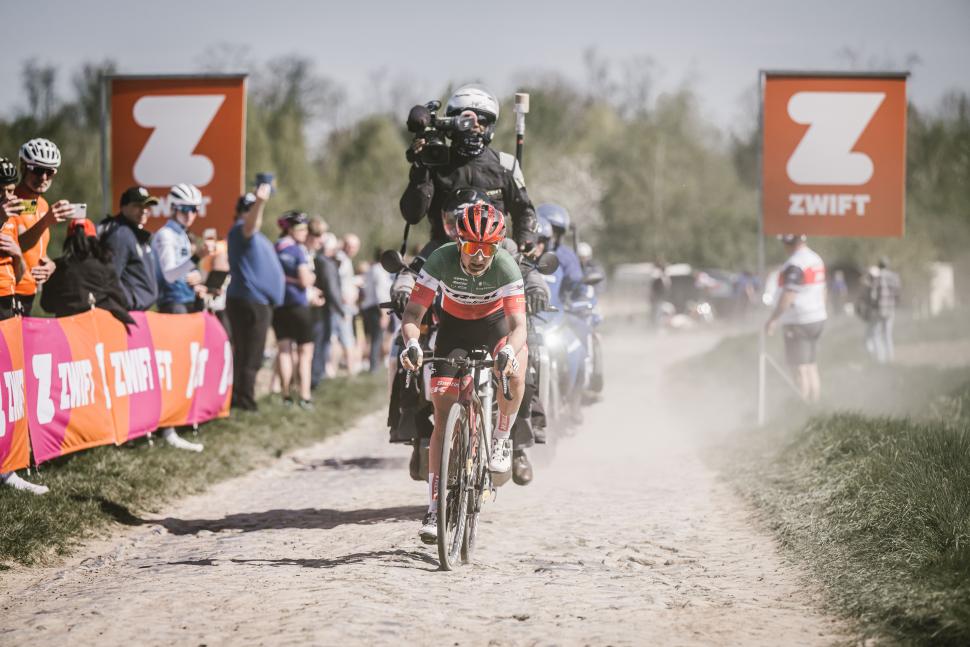
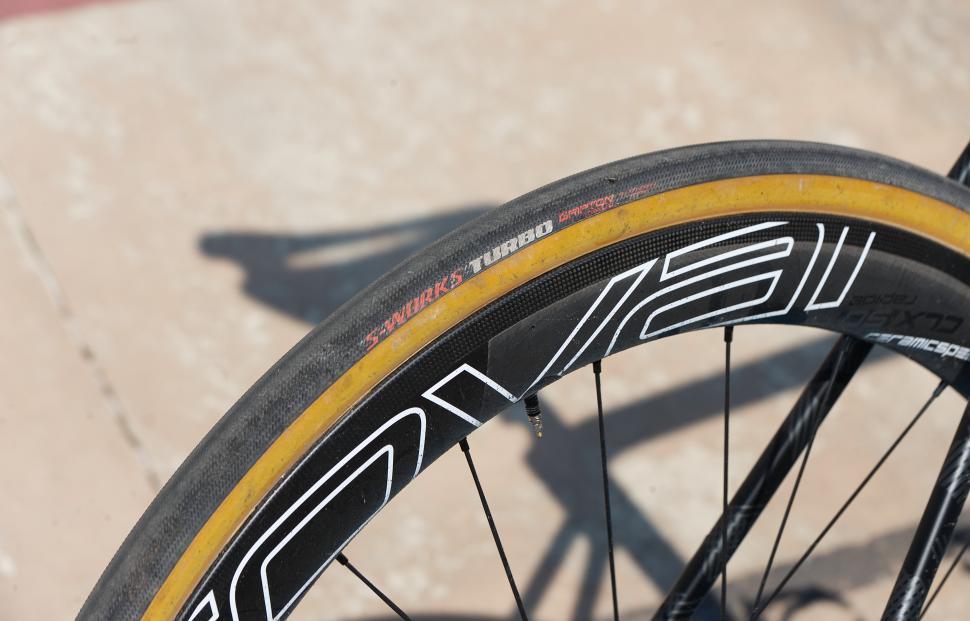
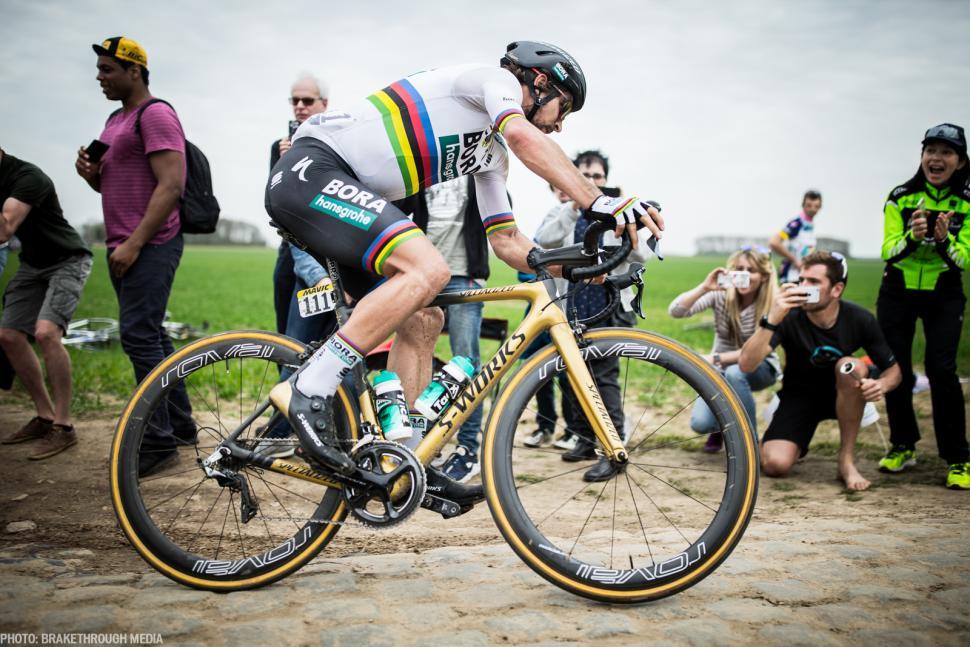
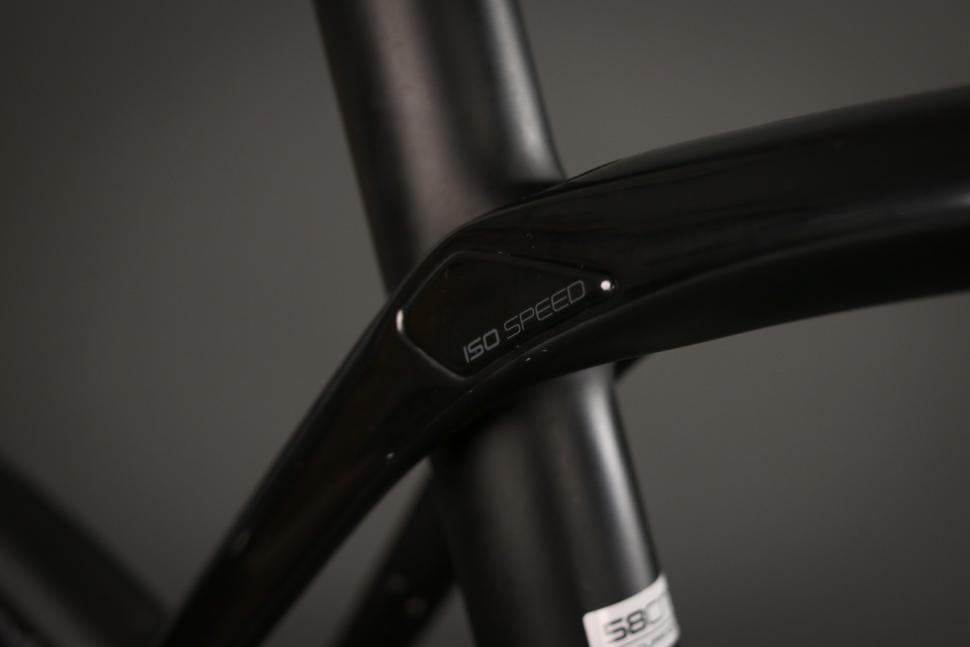
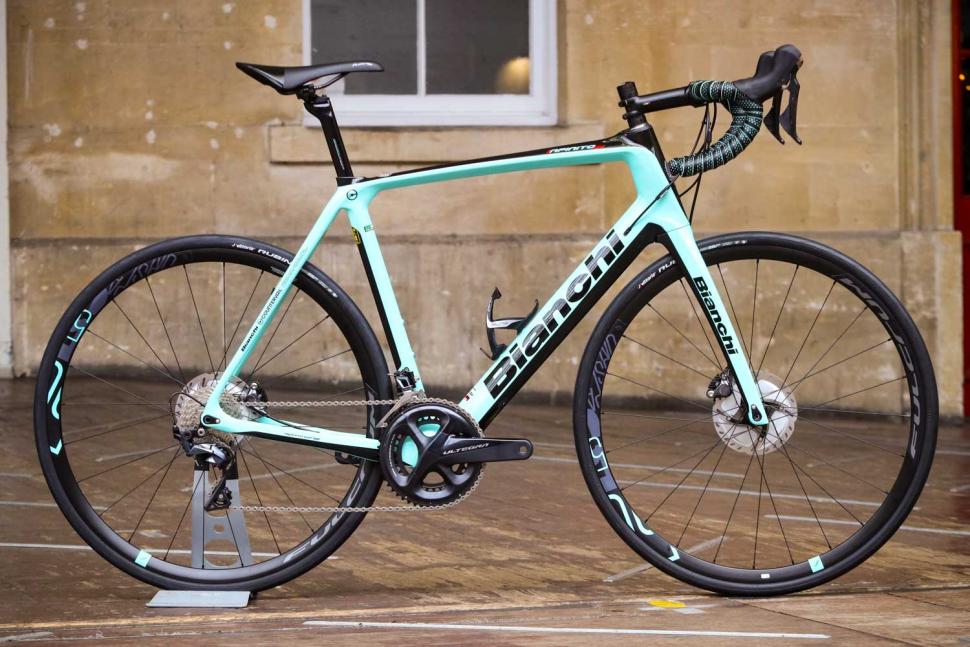
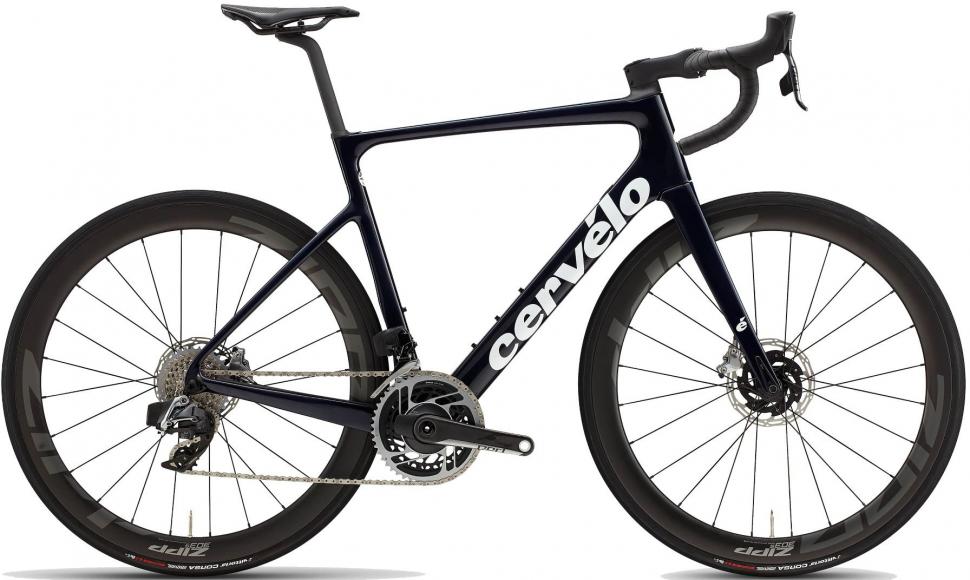

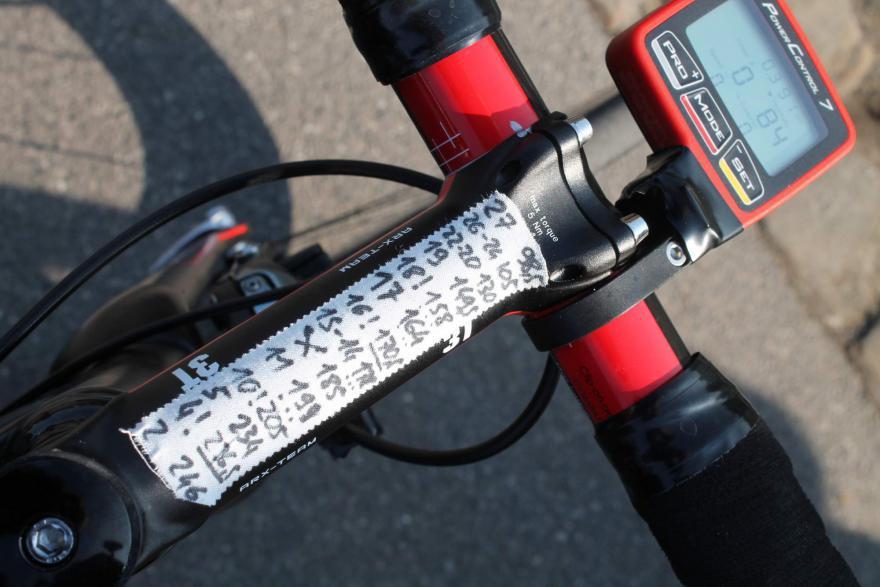


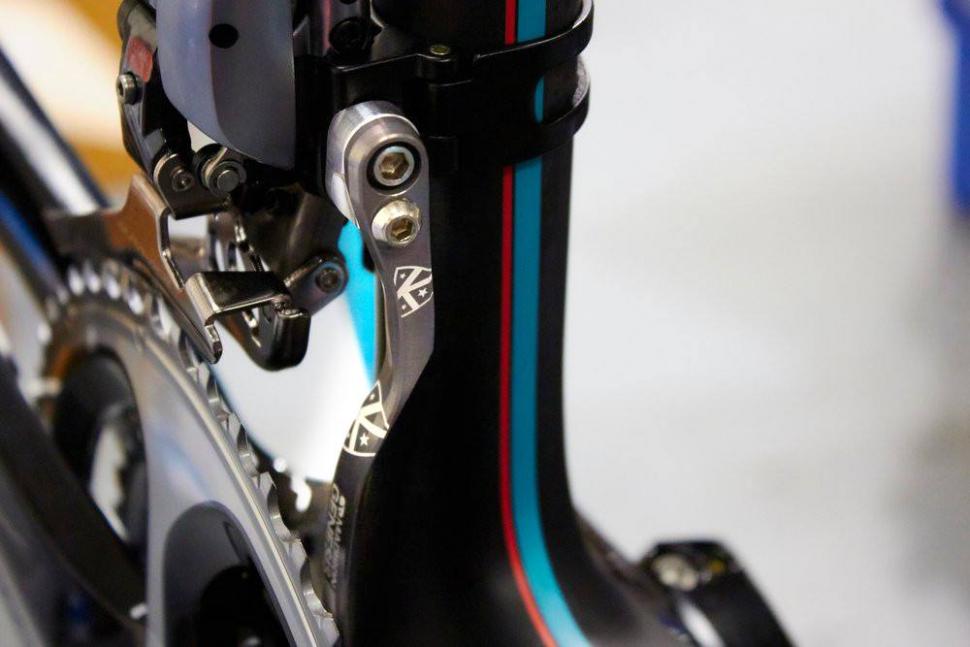

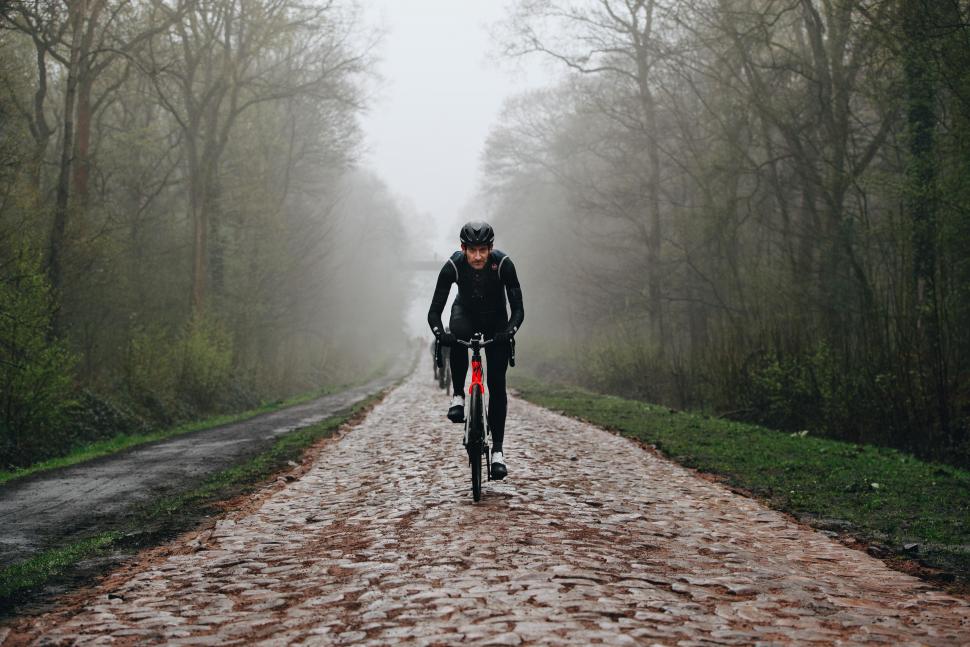
Disgraceful sentence that reinforces the contempt towards cycling. I hope both the driver and judge suffer a serious illness.
I think it has got better in some locations. For example, Baldwin Street and Victoria Street. Bus gates there have improved conditions greatly for...
" in what appears to be two random, completely unprovoked attacks."...
You could get away with much less turning area required if you go for a Kakeya set...
Insured yes, through BC, no.
Any chance we could have bike reviews for people with normal disposable incomes? My ti bike cost £2k, brilliant, versatile.....
I built a gravel bike last summer - a Ridley Kanzo Fast with Campag Ekar - and have used it through the winter with mudguards for club runs and the...
It's only for a minute
Another Conservative bemused at how but a Conservative policy is turning out
would be good to see you test the Newmen wheels the weight/price ratio is extremely good and suggests that europeans can match the chinese in this...